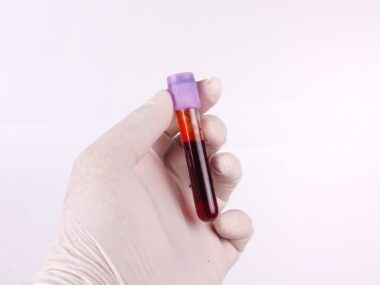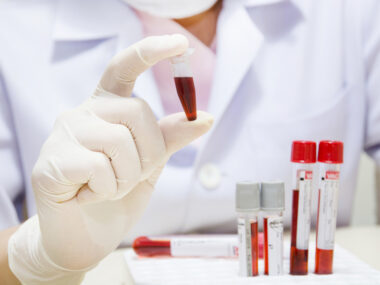IFN-1 levels before treatment may be biomarker of SLE activity: Study
High levels in lupus linked to fever, risk of future organ damage
Written by |

The activity of a class of immune signaling proteins known as type I interferons — called IFN-1 — was markedly high in the bloodstream of people with systemic lupus erythematosus (SLE) before treatment, a study reported.
Such elevated IFN-1 activity was not seen in patients with various other autoimmune disorders before treatment, according to researchers.
Fever, low white blood cell counts, oral and skin involvement, and the risk of developing organ damage were associated with high IFN-1 activity.
These findings suggest that this class of proteins plays an essential role in the development of SLE, and that levels measured before the start of treatment may be a potential biomarker of disease activity.
The study, “Relationship of systemic type I interferon activity with clinical phenotypes, disease activity, and damage accrual in systemic lupus erythematosus in treatment-naive patients: a retrospective longitudinal analysis,” was published in the journal Arthritis Research & Therapy.
Investigating IFN-1 levels in lupus patients
SLE is an autoimmune disease characterized by an abnormal immune response targeting various tissues in the body, including the brain, heart, lungs, skin, kidneys, and joints. It results in a wide range of symptoms.
IFN-1 are immune signaling proteins known to drive inflammation. In the presence of an infection, immune cells release these proteins to activate other cells to fight it off.
However, high IFN-1 activity is commonly found in the bloodstream of SLE patients and is considered a heritable risk factor for SLE. Saphnelo (anifrolumab-fnia), an approved treatment for adults with moderate to severe SLE, works by blocking the receptor to which IFN-1 normally bind.
Most studies supporting the association between IFN-1 activity and the features of SLE have focused on treated patients. Few reports, in turn, have examined the connection between IFN-1 and SLE in those yet to be treated — individuals known as treatment-naïve patients.
To learn more, researchers in Japan examined blood test data from 40 SLE patients before treatment, or at baseline, and after. As a comparison, data were collected from treatment-naïve patients with various other autoimmune disorders. Among these patients were 20 with rheumatoid arthritis (RA), 21 with systemic sclerosis (SSc), and 18 with microscopic polyangiitis (MPA), as well as 33 healthy individuals.
Blood tests revealed SLE patients had significantly higher IFN-1 activity than those with other autoimmune diseases and healthy individuals. No differences in IFN-1 activity were seen across all non-SLE participants.
High IFN-1 activity significantly correlated with higher (worse) total scores in the European Alliance of Associations for Rheumatology (EULAR)/American College of Rheumatology (ACR) classification criteria, a standard SLE assessment tool.
Elevated protein activity also was linked to fever, oral ulcers, skin involvement, low white blood cell counts, and low levels of C3 and C4, two immune-related proteins.
Our results suggest that IFN plays an important role in the [development] of SLE and that serum IFN activity at baseline may be a potential biomarker for the disease activity in treatment-naïve SLE patients.
In contrast, low IFN-1 activity correlated with acute pericarditis, which is marked by inflammation of the sac-like structure that surrounds the heart.
No connection was seen between treatment-naïve IFN-1 activity and kidney involvement or the levels of self-reactive antibodies associated with SLE.
Before treatment, blood IFN-1 activity was weakly correlated with scores on the SLE Disease Activity Index 2000 (SLEDAI-2K), a measure of disease activity. After a median of 7.1 years between the first treatment and later maintenance therapy, IFN-1 levels significantly dropped alongside SLEDAI-2K scores. Consistently, decreased IFN-1 activity correlated with lower SLEDAI-2K scores during treatment.
Patients who went on to develop organ damage had higher IFN-1 activity before treatment compared with those who did not. Organ damage also was associated with the use of methylprednisolone pulse therapy or intravenous (into-the-vein) cyclophosphamide (IVCY) pulse therapy.
A statistical analysis also found that intravenous cyclophosphamide pulse therapy was linked to an 8.6 times higher risk of organ damage, but not to increased IFN-1 activity before treatment.
“We have shown that treatment-naïve SLE patients have uniquely high serum IFN activity compared with patients with other rheumatic diseases or healthy individuals,” the researchers concluded. “Our results suggest that IFN plays an important role in the [development] of SLE and that serum IFN activity at baseline may be a potential biomarker for the disease activity in treatment-naïve SLE patients.”






